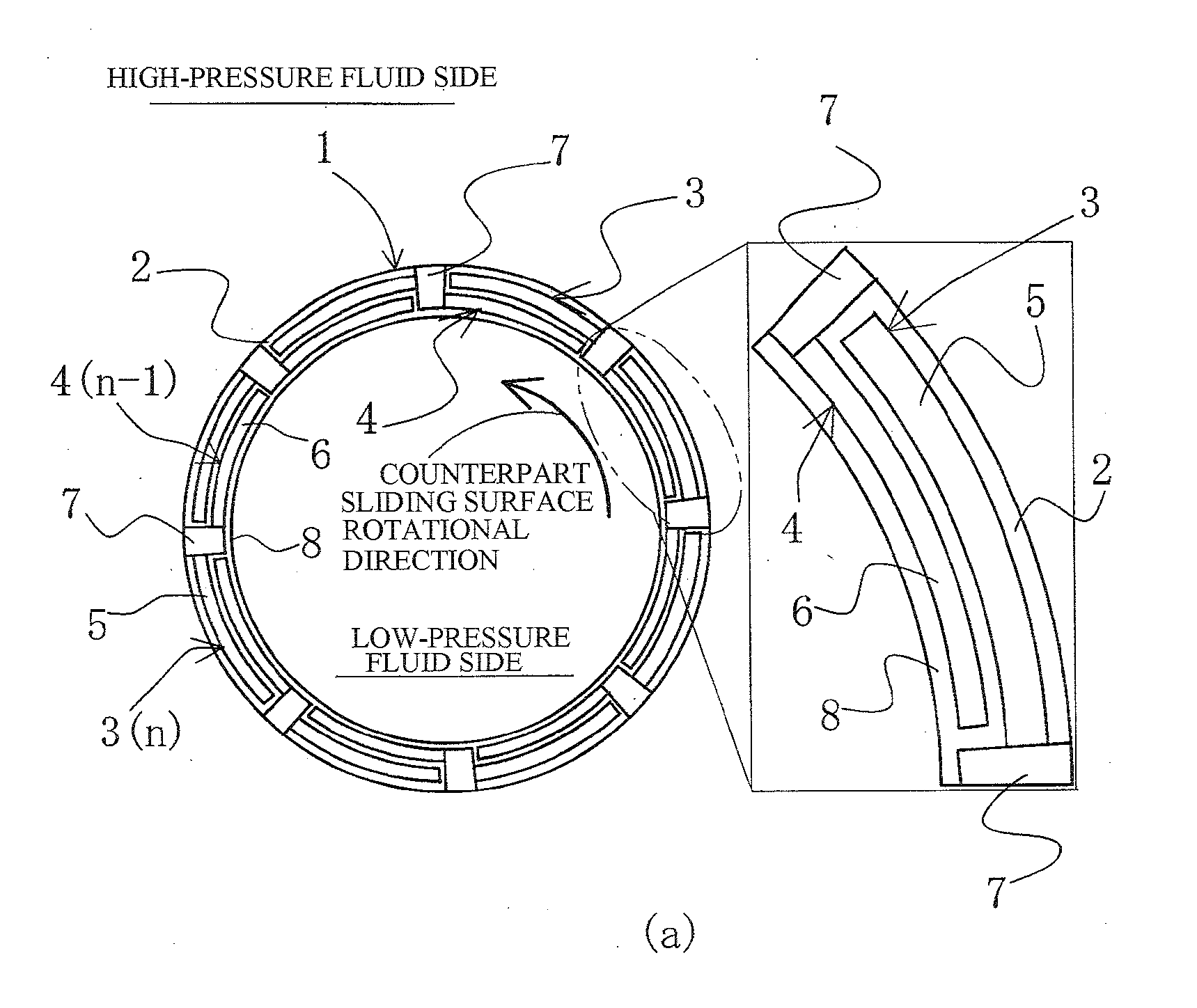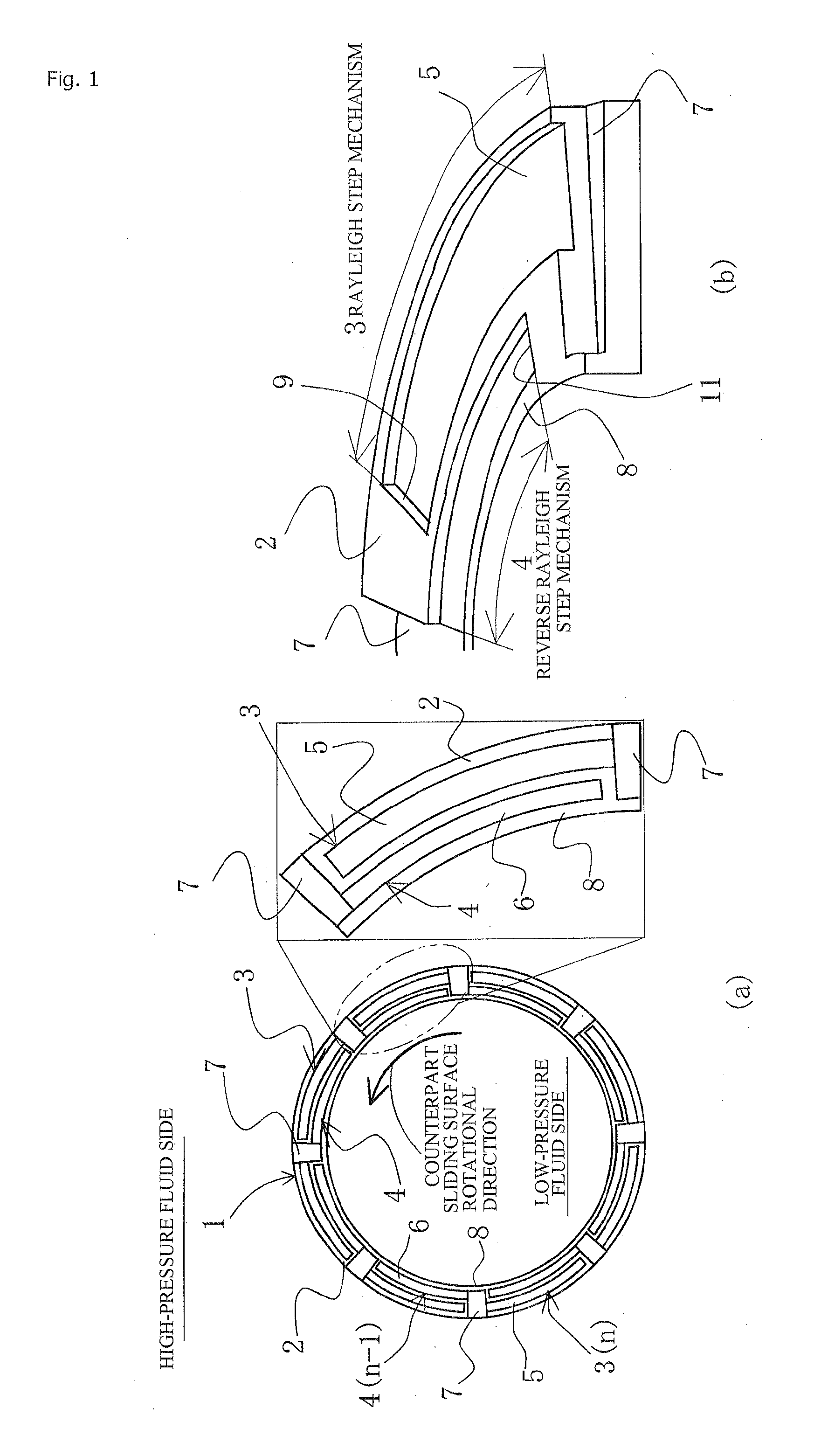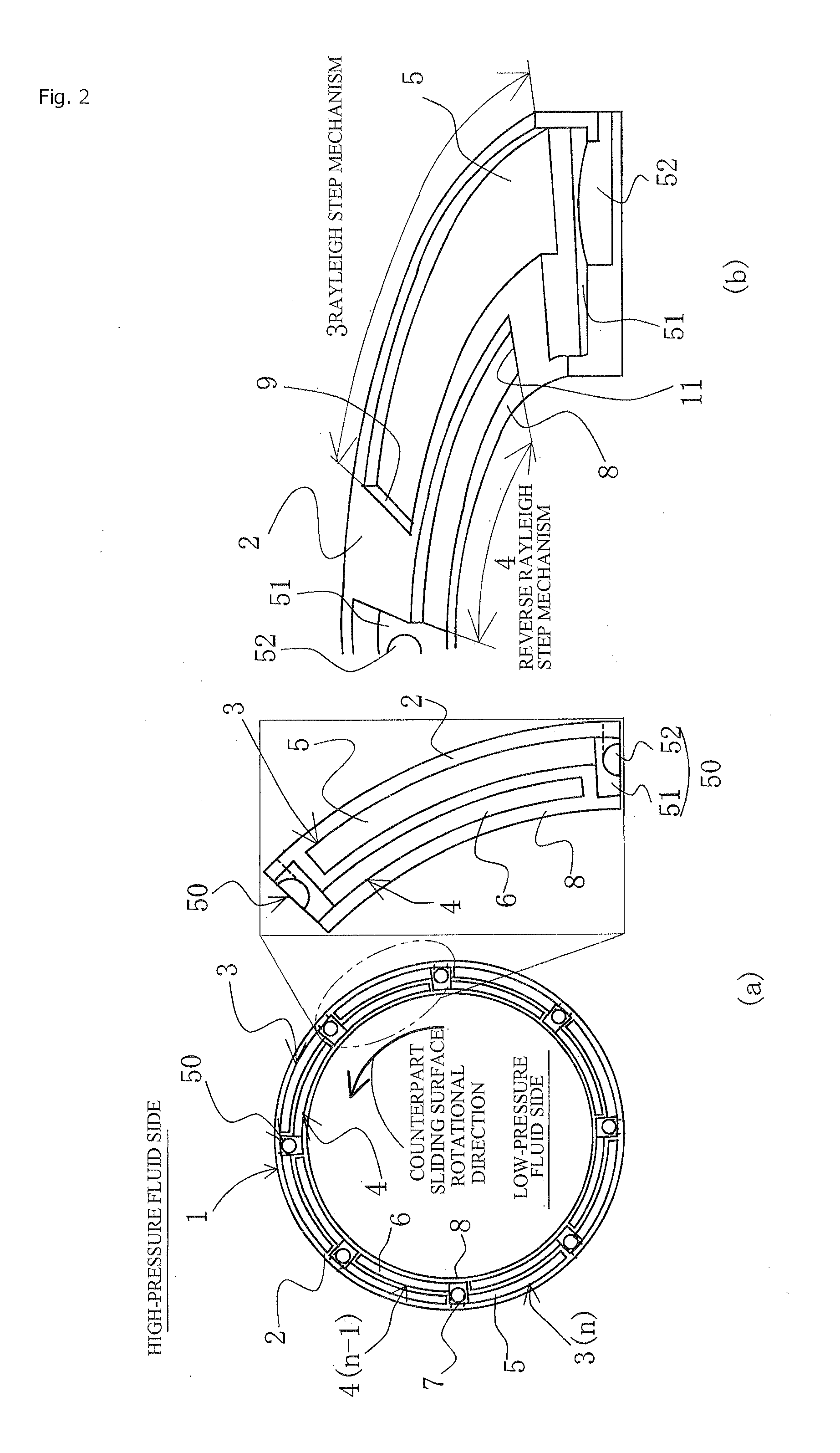Sliding component
a technology of sliding components and components, applied in the direction of shafts, bearings, engine seals, etc., can solve the problems of increased leakage rate, increased friction coefficient, and increased possibility of surface abrasion or damage due to direct contact, so as to achieve significant reduction of leakage rate, shorten machining time, and easy disposal
- Summary
- Abstract
- Description
- Claims
- Application Information
AI Technical Summary
Benefits of technology
Problems solved by technology
Method used
Image
Examples
embodiment 1
[0109]FIG. 1 illustrates a sliding surface 2 of a sliding component 1 according to Embodiment 1 of the present invention, wherein (a) is a plan view of the sliding surface 2 and (b) is a perspective view showing an enlargement of part of the sliding surface 2.
[0110]In FIG. 1, the sliding component 1 is an annular body, wherein usually a high-pressure sealed fluid is present on either the internal or external periphery of the sliding surface 2 of the sliding component 1, and the other periphery is exposed to the atmosphere.
[0111]This sealed fluid can be effectively sealed using the sliding component 1. The sliding component 1 is used in both a rotation sealing ring and a fixing sealing ring constituting a pair in a mechanical sealing device, for example. The sliding surface of the rotation sealing ring and the sliding surface of the opposing fixing sealing ring are brought in close contact, and a sealed fluid present on either the internal or external periphery of the sliding surface...
embodiment 2
[0159]FIG. 13 is for describing the sliding surface 2 of the sliding component 1 according to Embodiment 2 of the present invention, wherein (a) is a plan view of the sliding surface 2 and (b) is a perspective view showing an enlargement of part of the sliding surface 2.
[0160]In FIG. 13, the same symbols as those of Embodiment 1 indicate the same members as Embodiment 1, and detailed descriptions are omitted. In FIG. 13, the rotational direction of the counterpart sliding component opposing the annular sliding component 1 is a counterclockwise direction. This is the same even if the sliding component 1 rotates in a clockwise direction.
[0161]The external peripheral side of the sliding surface 2 of the sliding component 1 is provided with a positive pressure generating groove 3 composed of a Rayleigh step mechanism, a modified Rayleigh step mechanism, a spiral groove, a dimple, or the like; and the internal peripheral side is provided with a negative pressure generating mechanism 4 co...
embodiment 3
[0195]FIG. 21 is for describing the sliding surface 2 of the sliding component 1 according to Embodiment 3 of the present invention, wherein (a) is a plan view of the sliding surface 2 and (b) is a perspective view showing an enlargement of part of the sliding surface 2.
[0196]In FIG. 21, the same symbols as those of Embodiments 1 and 2 indicate the same members as Embodiments 1 and 2, and detailed descriptions are omitted. In FIG. 21, the rotational direction of the counterpart sliding component opposing the annular sliding component 1 is a counterclockwise direction. This is the same even if the sliding component 1 rotates in a clockwise direction.
[0197]In Embodiment 1 described above, the concept that the smaller the number of reverse Rayleigh step mechanisms 4 (the smaller the number of radial-direction grooves 7) and the greater the width w of the internal-peripheral-side seal surface 8, the lower the leakage rate, is as described in Embodiment 1 and so forth. Needless to say, h...
PUM
 Login to View More
Login to View More Abstract
Description
Claims
Application Information
 Login to View More
Login to View More - R&D
- Intellectual Property
- Life Sciences
- Materials
- Tech Scout
- Unparalleled Data Quality
- Higher Quality Content
- 60% Fewer Hallucinations
Browse by: Latest US Patents, China's latest patents, Technical Efficacy Thesaurus, Application Domain, Technology Topic, Popular Technical Reports.
© 2025 PatSnap. All rights reserved.Legal|Privacy policy|Modern Slavery Act Transparency Statement|Sitemap|About US| Contact US: help@patsnap.com



